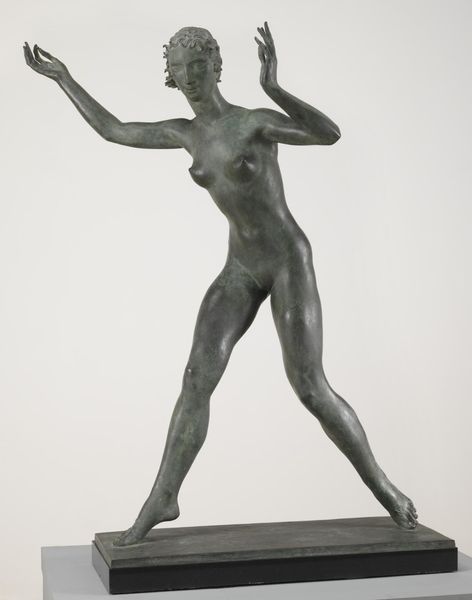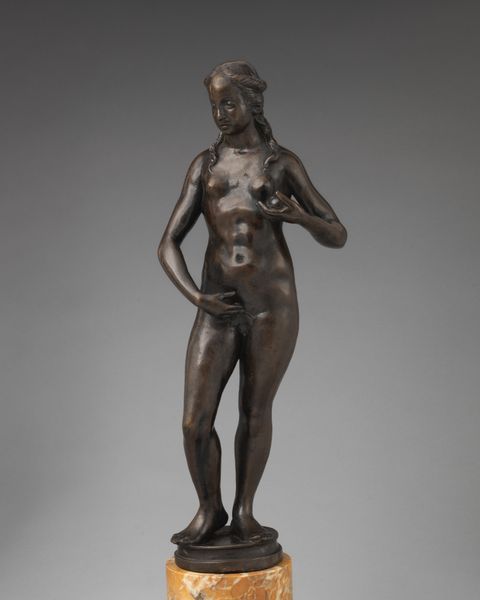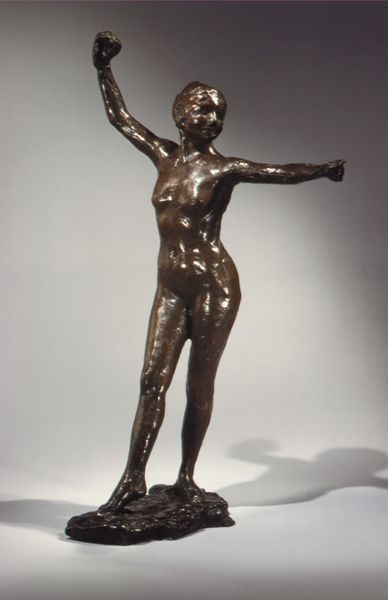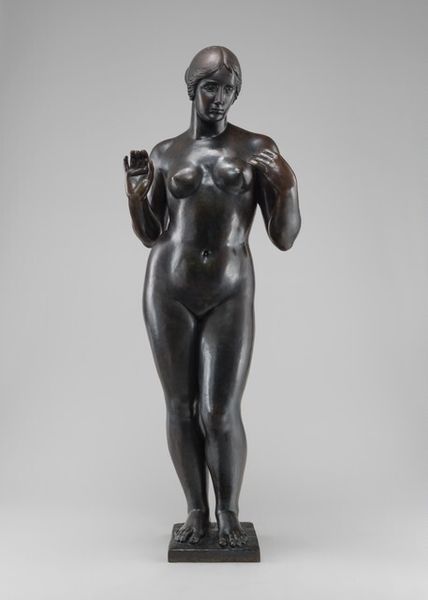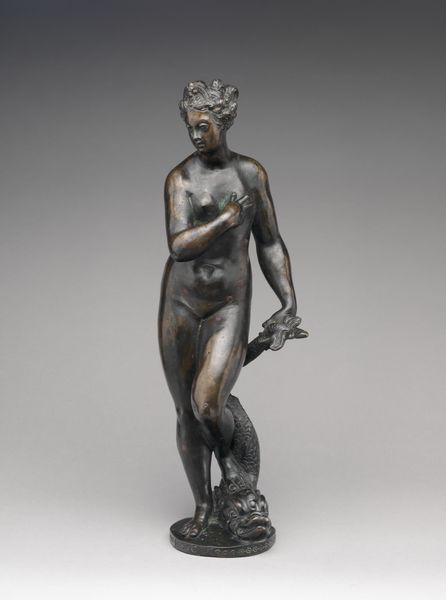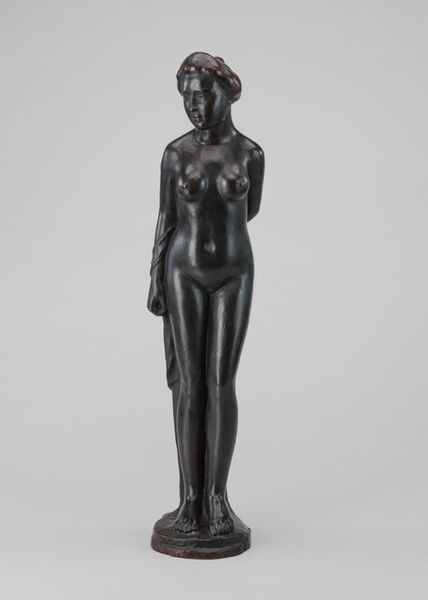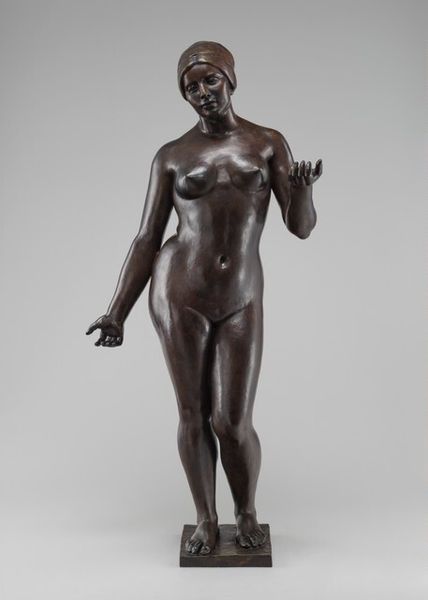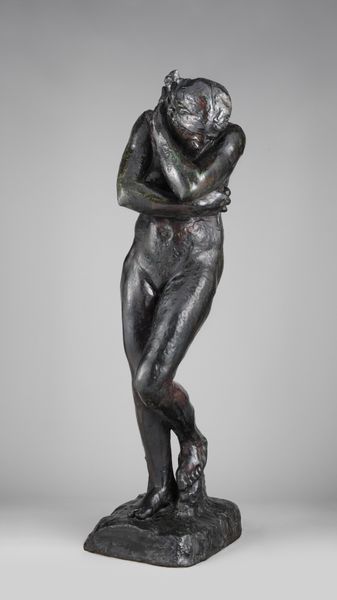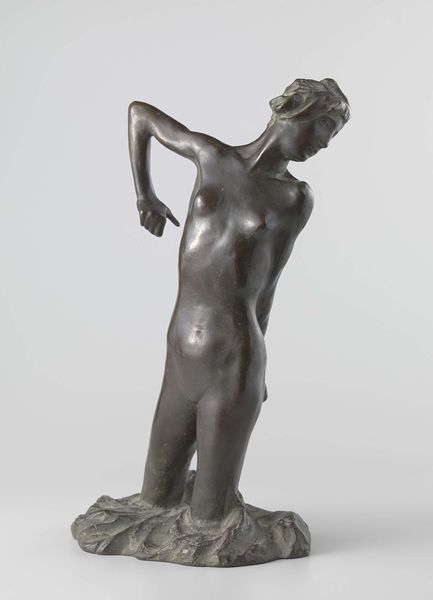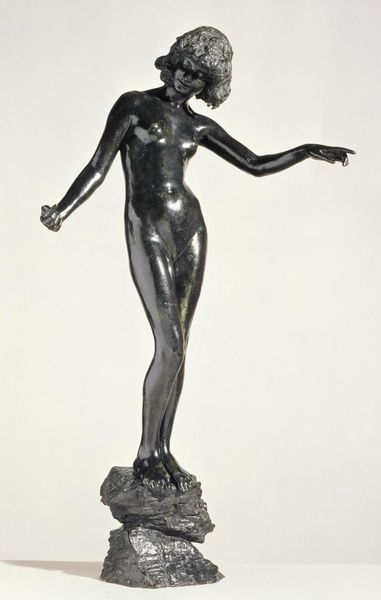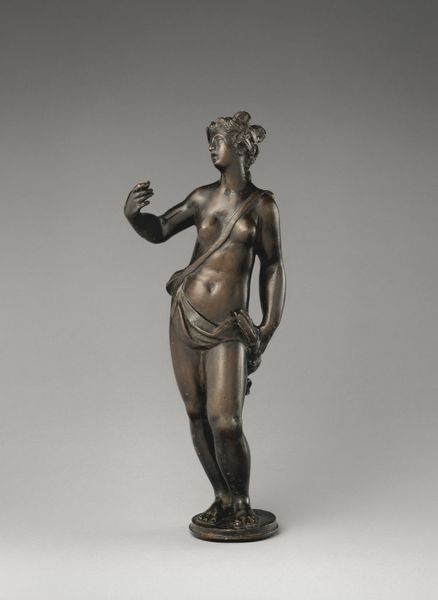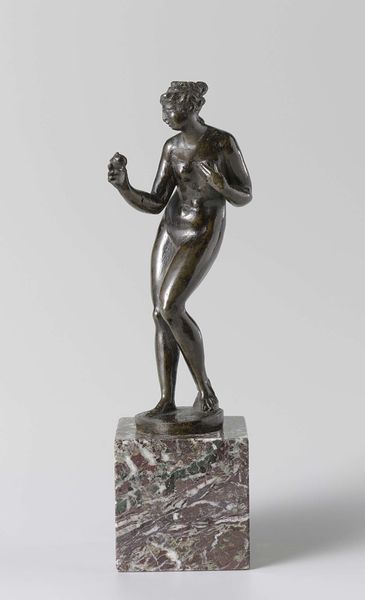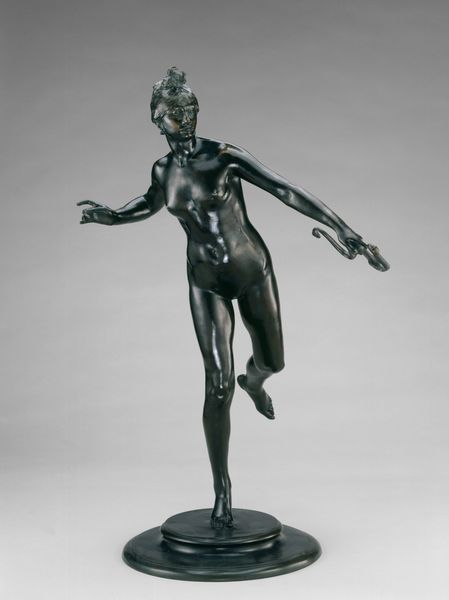
Dimensions: object: 1848 x 1118 x 775 mm
Copyright: CC-BY-NC-ND 4.0 DEED, Photo: Tate
Editor: So, this is Auguste Renoir's "Venus Victorious," a bronze sculpture in the Tate collection. I'm struck by the contrast between the smooth skin and the roughly textured drapery. What can you tell me about the material choices here? Curator: Considering Renoir’s background as a painter, it’s fascinating to see him translate his understanding of form and texture into sculpture, especially late in his career. The bronze casting process itself, the labor involved in creating the mold and the final product, and even the social implications of bronze as a valued material, all contribute to the sculpture's meaning. How does understanding the means of production impact your interpretation of Venus? Editor: It makes me think about the commodification of the female form, and the value placed on both the artist's skill and the material itself. Thanks for shedding light on that. Curator: Likewise; it's helpful to consider how the means of production and consumption can affect our appreciation of the piece.
Comments
tate 6 months ago
⋮
http://www.tate.org.uk/art/artworks/renoir-venus-victorious-n05934
Join the conversation
Join millions of artists and users on Artera today and experience the ultimate creative platform.
tate 6 months ago
⋮
The figure of Venus in this sculpture is based on the image of the goddess in a painting by Renoir, 'The Judgement of Paris'. In Greek myth Aphrodite (known to the Romans as Venus) competed for the prize of a golden apple, which she won by promising Paris that he could marry Helen of Troy, the most beautiful woman in the world. Renoir's sculpture shows Venus holding the apple in her moment of triumph. Renoir's conception of this work was influenced by memories of antique sculpture and by the 'modern classicism' of the contemporary sculptor Maillol. Severely crippled by arthritis, Renoir was helped in making this sculpture by an assistant, Richard Guino. Gallery label, August 2004
